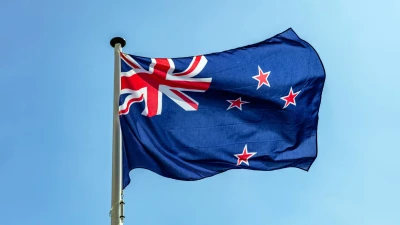Passive power: Cheapest ETF products see strongest flows



While fund managers are opting to launch active ETFs, EY has found two-thirds of ETF flows are going into those passive ones with an expense ratio of less than 25 basis points.
The quarterly ETF Flows report from consultancy EY examined investor flow trends into ETFs for the three months to 31 March.
Two-thirds of industry flows during the quarter went into 90 passive funds which had an expense ratio of 0–25 bps. The cheapest passive ETF on offer is the Vanguard US Total Market Shares Index ETF which has a fee of just 0.03 per cent.
EY noted this figure is cheap even for passive ETFs with a larger proportion of passive products (110) being concentrated in the higher fee band of 26–50 bps.
“Intense and longstanding fee pressures have forced players to control expense ratios which decreased to 0.33 per cent in the March 2025 quarter. The weighted expense ratio for active funds (124 ETFs) were 0.73 per cent, while passive funds (251 ETFs) had a ratio of 0.24 per cent in the March 2025 quarter.”
Commenting to Money Management on how passive funds can achieve these low costs, Rita Da Silva, EY Oceania wealth and asset management leader, said: “Passive ETFs achieve these low fees through scale, automation, and index replication efficiency. They track public benchmarks with minimal portfolio turnover, which reduces trading and management costs.
“Larger issuers also benefit from massive economies of scale – they can spread operational costs across billions in AUM, enabling them to offer fees as low as 0.03 per cent. Additionally, fee competition has become a key driver of flows, creating downward pressure across the industry.
“Cost leadership could be considered a strategic weapon in the passive space, used to attract flows and retain loyalty, even if margins are thin. For many issuers, low-cost passive ETFs also serve as an entry point to cross-sell other investment solutions.”
This preference for low-cost products means active ETFs only represent around 18 per cent of industry funds under management ($45.6 billion) and received only 0.9 per cent of total industry flows during the quarter.
In contrast to their passive counterparts, active ETFs have a much wider range of fee brackets. For example, of the active ETFs launched in the past quarter, the GCQ Global Equities Complex ETF has a fee of 1.25 per cent per annum, but the Macquarie Subordinated Debt Active ETF has a fee of only 0.29 per cent per annum.
The desire for cheap products has failed to deter active fund managers from entering the market, with all three new entrants during the quarter – PIMCO, GCQ and India Avenue – choosing to launch an active product, and 13 new active ETFs launched overall.
Da Silva said: “Many asset managers are repurposing or adapting existing active mutual funds into ETF wrappers to gain broader distribution via listed markets. The ETF format offers intra-day liquidity, tax efficiency and transparency.
“These features appeal to a growing segment of self-directed and adviser-driven investors. So, while passive dominance continues, active ETFs are a long-term strategic play by managers seeking brand visibility, product diversification, and future growth as investor sophistication matures.”
Speaking to Money Management at the time of the launch, GCQ head of distribution, Stephen Higgins, said the decision to launch its active ETF followed an increase in adviser inquiries for an ETF offering.
“Our decision to launch an ETF followed a steady increase in inbound inquiry from advisers and stockbrokers over the last 12 months urging us to go down this path. Many of these advisers use the CHESS platform exclusively and weren’t previously able to invest in the GCQ Flagship Fund.”
As well as the launches, the March quarter saw nine ETF delistings likely driven by factors such as low assets under management, minimal trading volume, or underperformance, but Da Silva said active managers are likely playing the long game with their launches.
“Their presence isn’t just about immediate uptake. Many launches are part of a long-term positioning strategy and may be supported by a broader product offering or cross-subsidised by other lines of business," she commented.
During the quarter, total ETF industry assets increased to $250.4 billion, up 1.6 per cent during the quarter as a result of strong net inflows. January, in particular, saw strong flows of $4.6 billion, but these were subsequently offset by weaker flows in February.
The majority of this AUM is held by three issuers: Vanguard, Betashares and iShares at 28.2 per cent, 19 per cent and 17.6 per cent, respectively.
Speaking to Money Management last month, Marc Jocum, investment strategist at Global X, said: “Active ETF penetration is scattered within Australia. Managers have found traction in some areas like Australian equities, covered calls, and fixed income. While global active equity ETFs have struggled to gain ground, I expect more active ETFs to come to market, but I highly doubt they will ever fully displace index ETFs, especially if they continue to charge high fees.”
Recommended for you
Commentators may be forecasting consolidation in private market firms but a survey of the industry itself expects new manager formation will still outpace this, especially in Asia Pacific.
Three Aussie fund managers have shared why they opted to expand their distribution to New Zealand, with adviser engagement rather than platforms crucial to achieving success in the wholesale market.viser engagement rather than platforms crucial to achieving success in the wholesale market.
Private markets may be the hot topic of the day but two financial advisers have shared the red flags to consider and why advisers shouldn’t be tempted to invest solely in the pursuit of higher returns.
The rise of private credit funds is giving research houses cause for concern about their viability for retail and wholesale investors and necessitating changes to their research process.















